Four delicious Syrian family recipes from Sumac by Anas Atassi
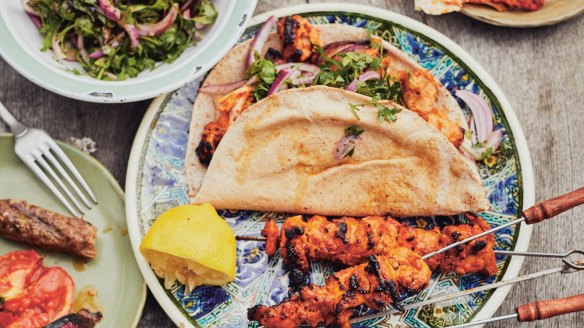
Nostalgia drove Anas Atassi into the kitchen. Away from home at university and missing the flavours of Syrian cuisine and the hospitality of his parents' home, he learnt to cook by following his mother's recipes for his favourite dishes and sending photographs of the results home for feedback. Eventually, those recipes became Sumac, a cookbook capturing family recipes, stories and kitchen lore.
Chicken shish kebab
Chicken kebabs are popular all over the world, and are made countless ways. If you want to make chicken the Syrian way, you'll need garlic, lemon, paprika and Aleppo pepper, and I like to use a mix of yoghurt, tomato puree and paprika to marinate the chicken. Chicken thighs give a more succulent result than chicken breast. Also drizzle the chicken kebabs with honey, a typical Syrian finish. This gives them a mouthwatering shine and a crispy sweet layer. This is delicious for dipping in aioli.
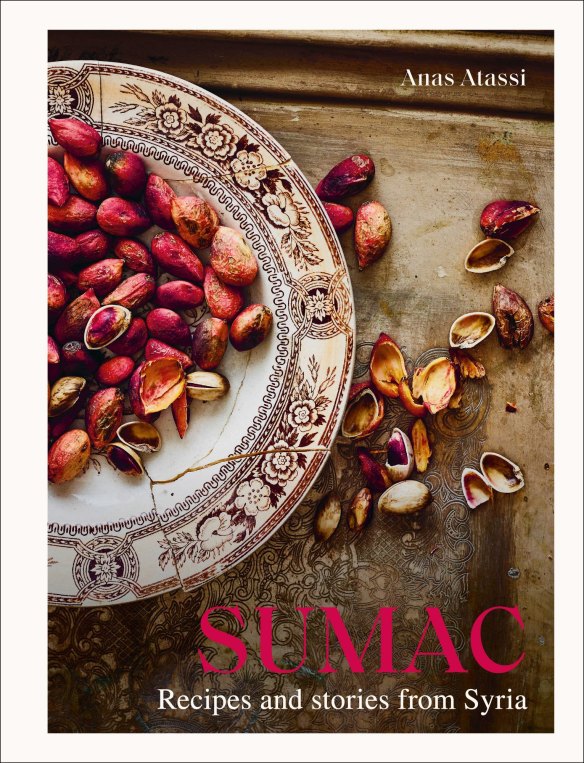
INGREDIENTS
- 800g chicken thighs, deboned and cut into 5cm pieces
- 400g Greek yoghurt
- 4 tbsp tomato paste (concentrated puree)
- 6-8 cloves garlic, crushed
- juice of 1 organic lemon
- 2 tbsp cayenne pepper
- 1 tbsp chilli flakes
- 1 tbsp ground cumin
- 4 tbsp olive oil
- salt to taste
- 50ml (2½ tbsp) honey
METHOD
- Fill a sealable freezer bag with all the ingredients except the honey. Seal the bag, toss the contents to blend them thoroughly, and then rub the marinade into the chicken.
- Place the bag on a plate or in a bowl (in case it leaks) and refrigerate for at least 3 hours.
- Preheat a barbecue or outdoor grill to 230C.
- Skewer the chicken pieces, leaving 8cm bare as a handle.
- On the barbecue: grill the skewers for 6-8 minutes, turning regularly, until the chicken is golden brown, slightly charred and completely cooked. Drizzle with some honey and grill a minute longer.
- In the oven: Place the skewers on a baking tray prepared with baking paper, cover with aluminium foil (this keeps the chicken from drying out) and bake for 15 minutes. Turn the grill on, remove the foil, drizzle the chicken meat with honey and then grill for another 3 minutes on each side.
Serves: 6
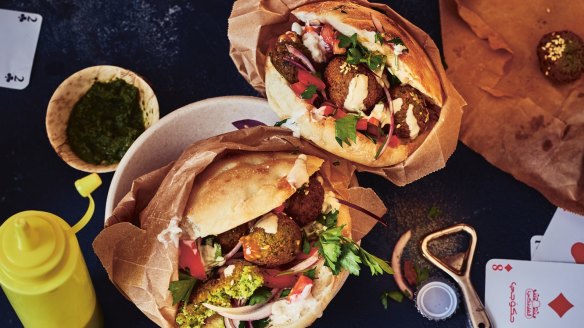
Falafel
Syrians never make falafel at home, at least my mother never did. There are numerous falafel joints, some better than others, all cheap. So why would you make it? Nowadays, though, I do make my own falafel, to capture the taste of Syria.
I mix in an assortment of fresh herbs and make up a batch when I have friends over. Everyone picks from the heaped plate of falafel, together with pickles, vegetables, sauce and flatbread, and puts together their own sandwich.
Falafels are usually deep-fried, which has given them a reputation as a greasy, unhealthy snack. It's typical to hear a Syrian ask someone who has a case of the hiccups: "Did you eat falafel yesterday?"
INGREDIENTS
- 200g (1 cup) dried chickpeas
- 1 bunch flat-leaf parsley
- 1 bunch coriander
- 1 onion, peeled, cut into quarters
- 3 cloves garlic, peeled
- 1 green chilli pepper
- ½ tsp ground cumin
- 30ml (1½ tbsp) olive oil
- salt and pepper
- 25g sesame seeds
- vegetable oil for frying
METHOD
- Soak the chickpeas in cold water overnight, for at least 12 hours. The chickpeas should swell to twice their size and should feel soft. Drain and rinse.
- In a food processor, pulse the soaked chickpeas with the parsley, coriander (stems included), onion, garlic, chilli pepper, cumin, olive oil, salt and pepper for about 2 minutes. The mixture should be well blended, but not too smooth.
- Line a large bowl or baking tray with paper towel – you will place the falafel on the paper towel after deep-frying to drain them of excess oil. Form small balls measuring about 3cm in diameter. Sprinkle them lightly with sesame seeds. Using your fingertips, gently press the seeds into the falafel. Refrigerate the falafel for 30 minutes.
- In a large pot, heat the oil to 180C. If you don't have a kitchen thermometer, test-fry a falafel ball to see if the oil is hot enough.
- Deep-fry a few falafel at a time to keep from overcrowding the pot. Fry for 5-6 minutes, or until brown and cooked completely. Skim them out of the oil and drain on the paper towel. Falafel are good with tarator (tahini-based sauce flavoured with lemon juice and garlic) or in a pita sandwich with a lot of lettuce.
Makes: 30-35
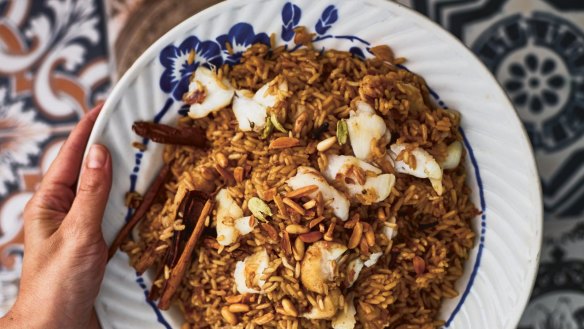
Sayadiyah (Spicy fish pilaf with caramelised onions)
To make traditional fish pilaf, you usually prepare the rice and fish separately, and serve the fish on top of a mountain of rice. In my version, I prepare the rice and fish at the same time. This gives the flavours a chance to meld together. The juices from the cooking fish lend a creaminess to the rice. Choose a firm white fish such as blue-eye trevalla fillets that won't fall apart too easily while cooking.
INGREDIENTS
- 6 tbsp olive oil
- 5 onions, halved and sliced into thin rings
- 700ml (2⅓ cups) fish or vegetable stock
- ½ tsp ground cardamom
- ½ tsp ground cumin
- ½ tsp ground cinnamon
- ½ tsp ground cloves
- ½ tsp turmeric powder
- salt and pepper
- 500g firm white fish, scales and bones removed
- 400g (2 cups) long-grain rice, rinsed and soaked for 10 minutes
- 15g (¼ cup) blanched almonds, toasted
- 15g (¼ cup) pine nuts, toasted
METHOD
- In a large saucepan, heat 4 tablespoons of olive oil on medium heat. Add half of the onion rings to the hot oil and cook for 15 minutes. Do not have the heat set too high because onions burn easily. Spoon the caramelised onions out of the pan and drain them on paper towel. Reserve half to garnish.
- Pulse the other half of the caramelised onions in a blender into a thick, dark-brown paste. Add the stock, ground cardamom, ground cumin, cinnamon, clove and turmeric. Blend everything on the pulse setting. Salt and pepper the stock to taste. Set aside – it will be used to cook the rice.
- In a deep pan, heat the remaining 2 tablespoons of olive oil on medium heat and sear the fish on both sides.
- Add the rice to the pan with the fish. Pour the stock from the blender over the fish and rice and bring to a boil. Turn the heat down to low, cover, and simmer for 12-15 minutes until the rice has cooked and absorbed all the liquid. Take the pan off the heat, cover, and let the rice rest for 10 minutes. The rice should be fluffy in texture and will have absorbed all the flavours.
- Spoon the pilaf into a serving dish, sprinkle with toasted nuts and garnish with the reserved caramelised onions.
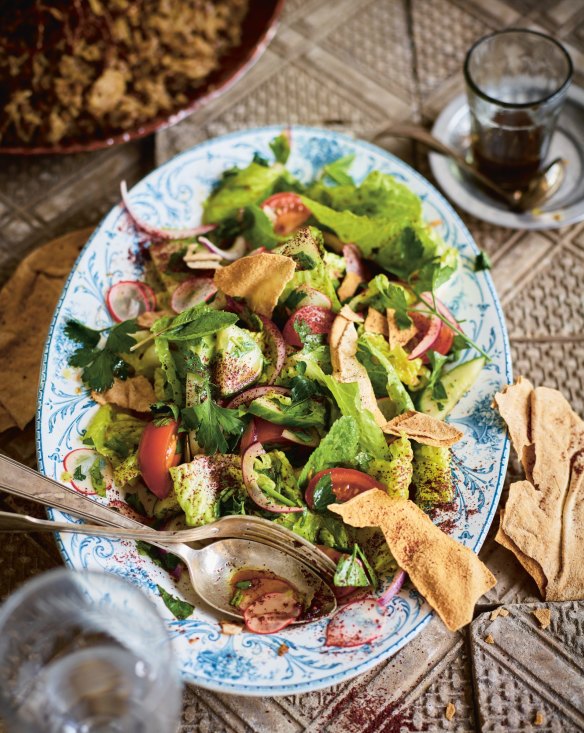
Fattoush
This is a well-known dish in Syrian cuisine. There is no single "real" way to prepare it, nor does the dish have a fixed ingredient list. It's improvisational and as simple as chopping up some vegetables and serving them with a dressing. That's it. It's the toasted flatbread on top that makes it a fattoush. Despite its variability, this dish tastes, like none other, of Syria. It tastes like the country, like the earth, like the local and the regional. It tastes like a hundred stories. A beautiful dish.
INGREDIENTS
- 1 head cos lettuce (washed and cut up into large pieces)
- ½ small cucumber (chopped)
- 3 medium tomatoes (chopped)
- 3 radishes (thinly sliced)
- 1 red onion (halved and sliced into thin rings)
- 1 bunch flat-leaf parsley (washed and coarsely chopped)
- 1 bunch mint (washed and coarsely chopped)
- 1 flatbread (toasted and torn into pieces)
For the dressing
- 1 garlic clove (crushed)
- juice of 1 organic lemon
- 2 tbsp white wine vinegar
- 1 tbsp pomegranate molasses
- 100ml good quality extra-virgin olive oil
- salt to taste
- 2 tsp sumac
METHOD
- In a small bowl, use a fork to whisk together all the dressing ingredients except the sumac.
- In a large bowl, and using clean hands, toss all the salad ingredients except the flatbread pieces. Add the dressing, 1 tablespoon of the sumac, and toss. Let the salad rest to meld the flavours.
- Before serving, arrange the toasted flatbread croutons over the salad and sprinkle the other tablespoon of sumac over the entire dish.
Tip: In Syria, purslane is often used in fattoush. If you can't find purslane, cos lettuce is a tasty alternative.
Serves: 4
This is an edited extract from Sumac by Anas Atassi, Murdoch Books, RRP $49.99. Food photography by Jeroen van der Spek. Buy now